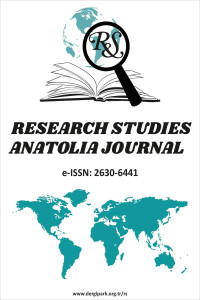TMS 38 maddi olmayan duran varlıkların muhasebeleştirilmesi
TAS 38 Accounting of Intangible Assets
Author(s): Mustafa ÖzaydınSubject(s): Business Economy / Management, Financial Markets, Accounting - Business Administration, ICT Information and Communications Technologies
Published by: Arif YILDIZ
Keywords: Intangible Assets; Accounting Standards; TAS-38;
Summary/Abstract: Rights that play an active role in increasing the profitability of the business, provide a competitive advantage to the business, but are not physically present are called intangible assets. In today's conditions, as digitalization increases, intangible assets are gaining more importance in the assets of businesses. In addition to physical assets, intangible assets are also used by businesses in order to continue their existence and to continue their activities uninterruptedly in the conditions of increasing commercial competition. Assets such as patent, copyright, import quota, software program, film, customer and supplier network and connection, distribution system, right to use name, right to operate, market dominance can be given as examples of intangible assets. By applying valuation to these assets in line with the market conditions, it becomes important that the assets are included in the financial statements correctly. Among these resources used by businesses, the assets that should be included in the class of intangible assets and their recording, valuation, depreciation, replacement expense, and application of impairment are regulated in detail in TAS 38 Intangible Assets Standard. In this study, the accounting procedures and principles of the assets in the group of intangible fixed assets acquired by businesses in accordance with the provisions of TAS38 Intangible fixed assets standard are examined. Firstly; Basic information about the concepts enumerated in the TMS38 standard was given, then; Applications related to valuation, accounting, depreciation and other transactions of intangible assets are explained and application examples are given. In the study, the conclusion was reached with the literature review and the application was made with the monograph method. At the same time, when the items included in the concept of intangible assets are examined, it is seen that the study includes the elements that will bring high added value to the economy and they should be emphasized.
Journal: R&S - Research Studies Anatolia Journal
- Issue Year: 5/2022
- Issue No: 4
- Page Range: 445-477
- Page Count: 33
- Language: Turkish

